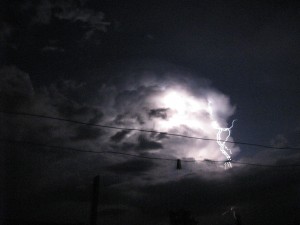April 4-8 Designated as Severe Weather Awareness Week
DES MOINES – Governor Terry Branstad has designated April 4-8, 2011, as Severe Weather Awareness Week in Iowa.
The Iowa Homeland Security and Emergency Management Division (HSEMD), together with the National Weather Service (NWS), is again recognizing the first week in April as Severe Weather Awareness Week. The goal is to provide Iowans a better understanding about the state’s spring weather hazards. Brochures and fact sheets about Iowa’s various hazards are available for download on both HSEMD’s BeReadyIowa website and the Des Moines NWS website, www.weather.gov/desmoines.
The public and news media can also find daily public service announcements, and podcasts featuring tips from HSEMD and NWS officials, available for download at www.BeReadyIowa.org, beginning today.
“Flooding has been emphasized here in Iowa quite a bit during the last month,” said J. Derek Hill, administrator for Iowa HSEMD. “However, Iowans need to remember there are other hazards for which they need to be prepared this time of year, too.”
For each day during Severe Weather Awareness Week, a different subject will be highlighted:
Monday Flash Floods
Tuesday Weather Warnings
Wednesday Tornadoes
Thursday Severe Thunderstorms
Friday Family Preparedness
The highlight of Severe Weather Awareness Week is the annual tornado drill scheduled for Wednesday, April 6 at approximately 10 a.m. Schools, businesses, state and local governments, the military, and individuals are strongly encouraged to participate in the drill. Additional information about the tornado drill can be found on local NWS websites.
The National Weather Service has received a waiver from the Federal Communications Commission to use “live” Emergency Alert System (EAS) codes during the statewide tornado drill.
Jeff Johnson, warning coordination meteorologist with the Des Moines National Weather Service, said use of the live EAS codes will enable them to test the warning system via NOAA weather radios from start to finish during the tornado drill. Broadcasters using the EAS will be able to test their equipment to make sure tornado warnings go out over the airwaves like they should. Johnson said without the ability
to use the EAS codes, they would have to use codes to simulate the warning. By using the live codes, he explained, NOAA weather radios will go off during the drill, making it easier for people to participate.
Additional information about severe weather and family safety can be found at www.mahaskaready.com











